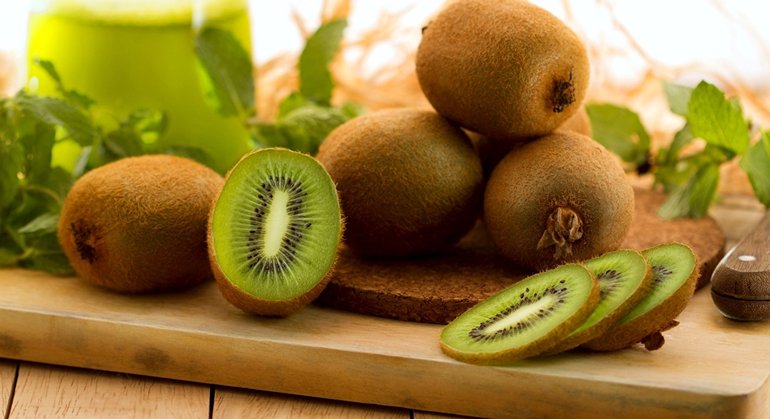


The fruit has a thin, fuzzy, fibrous, tart but edible light brown skin and light green or golden flesh with rows of tiny, black, edible seeds. The fruit has also a soft texture with a sweet and unique flavor.
Kiwis are known as healthy as well as expensive fruit. But, it can be grown easily in most areas in Kenya and this means more and more farmers can reap the rewards of this fruit. While Kenya offers an ideal climate and ecological requirements for kiwi fruit farming, many farmers, investors and entrepreneurs do not have the information necessary for the successful growing of this fruit, this means the local demand for the Kiwi fruit is not fully met by the imports from China, Italy and India.
In this guide, we break down to you how you should go about sourcing for appropriate kiwi seedlings, land preparation, planting, managing and harvesting the kiwi fruit.
Why should you get into the Kiwi Fruit Business?
Kiwi farming has some advantages. Here we are trying to mention the top advantages of this business.
Getting started with kiwi fruit farming in Kenya
Kiwi farming is relatively very easy and direct. The kiwifruits can be grown in different types of fertile soil in temperate.
Kiwifruit vines will grow on a wide range of soils, from a sandy loam to a clay loam, as long as drainage is good. Although vines grow in soil with pH between 6.0 and 8.0, they do best in a deep, well-drained silt loam with a neutral pH (about 7.0). Plants will not tolerate heavy, poorly drained soils. When grown in sandy soils. When selecting a site for planting kiwifruit vines, consider air drainage, wind, and water.
Where you source your seedlings is extremely important, The best source of these seedlings is a nursery seedling that understands the mechanics of growing high quality, disease free seedlings, At Denettols enterprises we offer seedlings that will guarantee you crops that yield high returns at and average cost about Ksh 200 each per seedling.
However, an established kiwi orchard, you can produce your own seedlings through cuttings. The cutting will develop new roots and shoots and you can transplant it when it grows enough leaves.
You can also propagate kiwi fruit seedlings from seeds but we discourage this method because the resultant seedlings usually have inferior characteristics compared to the mother plant and take too long to mature.
Distance of one plant to another varies depending on the variety and the system of training. Generally the spacing systems are adopted for planting kiwi plants.
In T-bar system, a spacing of 4 meter from row to row, and 5 to 6 meter from plant to plant is common. While in pergola system, maintain a spacing of 6 meter from row to row.
Distribute male plants throughout the orchard to ensure better pollination. The male to female plant ratio should be around 1:5 respectively.
Taking additional care of the plants is a must for good growth of the plants and maximum production.
The kiwi is not a plant and then harvest crop, and the plants require lots of care and maintenance. Here we are trying to describe more about the caring of kiwi plants.
Kiwi plants start bearing fruits 5 years after initial planting. However, you can expect a commercial yield only after 7 to 8 years of plantation. The maturity of Kiwi fruits depends on the temperature of the region. Picking larger size fruits are recommended. As Kiwi fruits have stiff hairs on their surface, rub these surfaces with a coarse cloth.
Kiwi fruits have a good shelf life and keeping the quality. Grading of the fruits should be done based on weight. Use cardboard boxes for packing hard and graded fruits to send them to local markets.